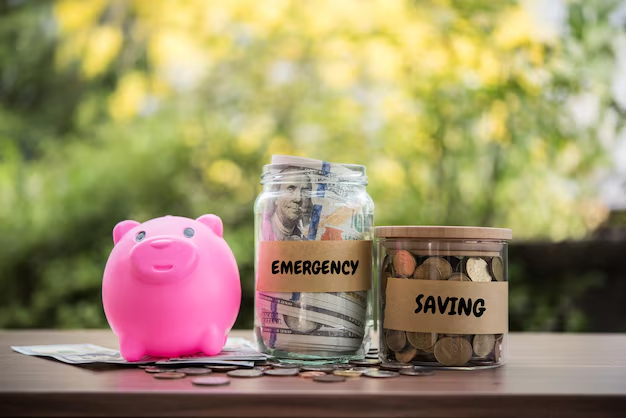Financial emergencies can occur unexpectedly, whether it’s a medical bill, car repair, or unforeseen personal expenses. For many, these emergencies can cause significant stress and anxiety, especially if the funds to cover the expense aren’t readily available. Quick emergency loans can provide the immediate financial relief you need to navigate these situations without disrupting your daily life or long-term financial stability. In this article, we will explore how quick emergency loans work, what to consider before applying for one, and the advantages and potential risks involved.
Key Takeaways
- Quick emergency loans offer fast access to funds, making them ideal for urgent situations.
- Different types of quick emergency loans include payday loans, personal loans, title loans, and credit card cash advances.
- These loans often have high-interest rates, short repayment terms, and may carry risks of debt cycles if not repaid on time.
- Borrowers should carefully evaluate their ability to repay the loan before applying and be aware of potential fees and risks associated with quick emergency loans.
What Are Quick Emergency Loans?
Quick emergency loans are short-term loans designed to provide immediate financial relief in times of urgent need. These loans are typically offered by traditional banks, credit unions, payday lenders, online lenders, and other financial institutions. The loan amount is usually smaller compared to long-term loans, and the approval and disbursement processes are streamlined to ensure you get the funds as quickly as possible.
Quick emergency loans can help cover a variety of unexpected expenses such as:
- Medical bills: Emergency medical procedures or doctor visits that aren’t covered by insurance.
- Car repairs: Urgent repairs to your vehicle to ensure you can continue commuting to work or school.
- Home repairs: Unforeseen damage to your home, such as plumbing issues or roof leaks.
- Personal emergencies: Unplanned costs, such as a last-minute travel expense due to a family emergency.
- Bill payments: Preventing utility shut-offs, credit card debt, or other essential payments.
Unlike traditional loans, which may take several weeks to process, quick emergency loans are designed to be processed and disbursed quickly—often within a matter of hours or days.
How Quick Emergency Loans Work

The application process for quick emergency loans is typically fast and straightforward. Most lenders aim to provide a quick solution, especially for borrowers facing an urgent financial need. Here’s how the process generally works:
Application
To apply for a quick emergency loan, you’ll need to fill out an application with your lender, either online or in person. The application will require personal information such as your name, address, employment details, income level, and the loan amount you are requesting. In some cases, lenders may ask for additional documentation, such as proof of income or a bank statement, but the process is typically much quicker than applying for a traditional loan.
Approval Process
Once you’ve submitted your application, the lender will review the details to assess your eligibility. For quick emergency loans, lenders generally focus on basic factors such as:
- Credit score: Some lenders may conduct a credit check, while others may provide loans to borrowers with poor credit. Payday loans, for example, are often available with little or no credit check.
- Income: Lenders want to ensure you have a reliable income source to repay the loan. This is why you may be asked to provide documentation of your income or employment.
- Loan amount: Lenders will assess the amount you’ve requested and determine whether it fits within the terms of the loan.
Unlike traditional loans, which may require a more extensive review of your financial history, quick emergency loans generally have a quicker approval process. In many cases, you’ll receive approval within hours of submitting your application.
Disbursement of Funds
Once approved, the funds are disbursed quickly to your bank account or through other means, such as a prepaid debit card or check. For payday loans, the funds may be deposited the same day or within 24 hours. For other types of emergency loans, such as personal loans, the disbursement may take a few business days.
Repayment Terms
Quick emergency loans typically have shorter repayment terms compared to traditional loans. Depending on the loan type, repayment terms may range from a few weeks to a couple of months. In some cases, the loan may be due on your next payday, which is why payday loans are often called “short-term loans.” The repayment schedule will depend on the specific terms set by your lender, but it’s important to ensure that you can meet the repayment terms before taking out a quick emergency loan.
Types of Quick Emergency Loans
There are various types of quick emergency loans, each with its own features and requirements. Some of the most common types include:
Payday Loans
Payday loans are one of the quickest types of emergency loans available. These loans are typically small amounts, ranging from $100 to $1,000, and are usually due by your next payday. While payday loans are easy to obtain, they often come with high-interest rates and fees. They are best suited for borrowers who need immediate cash but can repay the loan quickly.
Personal Loans
Personal loans are unsecured loans that can be used for various purposes, including covering emergency expenses. Unlike payday loans, personal loans usually have longer repayment terms, ranging from a few months to a few years. They may have lower interest rates, especially for borrowers with good credit. However, personal loans often require more documentation and may take longer to process than payday loans.
Credit Card Cash Advances
Credit card cash advances are another option for quick emergency loans. If you have an existing credit card with available credit, you can withdraw cash from an ATM or transfer funds to your bank account. Cash advances often come with higher interest rates and fees than regular credit card purchases, so they should only be used in emergencies.
Title Loans
Title loans allow you to borrow money by using your car as collateral. These loans are quick and can provide a substantial amount of money, depending on the value of your vehicle. However, title loans carry the risk of losing your car if you fail to repay the loan. They often come with high-interest rates and short repayment terms, making them a risky option for some borrowers.
Peer-to-Peer (P2P) Loans
P2P loans are a newer option in the world of quick emergency loans. These loans are offered by individuals or investors rather than traditional financial institutions. P2P loans can be obtained through online platforms, and the approval process can be faster than traditional loans. However, P2P loans may require good credit, and the terms can vary significantly based on the platform and the investor.
Advantages of Quick Emergency Loans

Quick emergency loans offer several benefits for borrowers in urgent need of financial relief. Some of the key advantages include:
Fast Access to Funds
The most significant advantage of quick emergency loans is the speed at which funds are made available. Unlike traditional loans, which may take weeks to process, quick emergency loans are designed to provide fast access to funds, sometimes as quickly as within 24 hours.
Minimal Requirements
Quick emergency loans often have fewer requirements than traditional loans, making them accessible to a larger number of borrowers. For example, payday loans and title loans may not require a credit check, and personal loans may only require proof of income.
Easy Application Process
Applying for quick emergency loans is often simple and can be done online, over the phone, or in person. The application process is streamlined, requiring minimal documentation and making it easier for borrowers to get the financial relief they need quickly.
Flexible Loan Types
With different types of quick emergency loans available, borrowers can choose the loan that best suits their needs and financial situation. Whether it’s a payday loan for a small emergency or a personal loan for a larger expense, there are options to fit various situations.
Disadvantages and Risks of Quick Emergency Loans
While quick emergency loans offer immediate relief, they also come with potential risks and disadvantages. Some of the drawbacks include:
High-Interest Rates
One of the major downsides of quick emergency loans, especially payday loans and credit card cash advances, is their high-interest rates. Borrowers who cannot repay the loan quickly may end up paying much more than they initially borrowed due to excessive fees and interest.
Short Repayment Terms
Quick emergency loans often come with short repayment terms, which can put pressure on borrowers who may struggle to repay the loan on time. Missing a payment or failing to repay the loan in full can result in additional fees and an increased debt burden.
Risk of Debt Cycle
Borrowers who cannot repay quick emergency loans on time may find themselves in a cycle of debt. High fees and interest rates can cause the debt to grow rapidly, making it even more difficult to pay off. In some cases, borrowers may need to take out additional loans to cover the existing debt, exacerbating the problem.
Risk of Collateral Loss
For loans that require collateral, such as title loans, borrowers risk losing their property if they are unable to repay the loan. This makes collateral-based loans risky, especially if you rely on your car for transportation or need the asset for other purposes.
What to know about emergency loans

If you need cash immediately, you have several types of emergency loans to choose from. Which product is right for you depends on how much you need, how fast you need the money, your financial situation and your monthly budget.
Emergency loans can be installment or revolving forms of credit. With an installment loan, you receive all the funds at once and make fixed monthly payments over a set period. With a revolving loan, you can use, pay off and reuse the credit as often as needed.
Both options can be funded quickly, with funds sometimes available the same day you apply.
Emergency loans: Installment options
If you want a predictable payment and fixed interest rate and need all the funds upfront, these installment loan options are worth considering.
Personal loans
Personal loans are often a go-to choice in an emergency because they can be funded quickly — sometimes the same day you apply — with a relatively easy approval process. Emergency personal loans interest rates are typically fixed with payments that can be spread out over one to seven years, giving you more payment choices to fit your budget.
Most emergency personal loans are unsecured, which means you qualify based on your credit score, income and job history. You may qualify for loan amounts between $1,000 and $50,000 and for a rate below 8 percent if you have excellent credit. However, bad credit personal loan lenders may approve borrowers with scores as low as 300, but the rates can be as high as 36 percent.
Payday loans
Payday loans are small emergency loans tied to your regular paycheck. They offer a fast cash option if you need up to $250. They must be repaid, plus fees, by your next paycheck and annual percentage rates (APRs) can exceed 400 percent. Because they are approved based entirely on your paycheck, and your credit is not often checked.
Many states consider payday loans predatory and regulate them heavily, and they should only be used as a last resort. Fixing a car you use for work, paying a past due utility bill or for a medical prescription for you or a sick family member are situations where a payday loan might be necessary.
Title loans
A title loan is a secured installment loan option worth considering if you own a car with no loan on it. These emergency cash loans typically allow you to borrow 25 to 50 percent of your car’s value with repayment terms of 15 to 30 days.
Title loans may be easier to qualify for at lower rates than payday loans, but your vehicle must meet the lender’s standards. However, if you can’t repay the loan, the bank could repossess your vehicle.
Emergency loans: Revolving options

Credit cards and other types of revolving credit come in handy if you can’t afford an installment loan payment, or don’t need all the emergency cash immediately. Your payment is only based on the amount you use, giving you a lower payment if you only need to borrow a small amount of your full credit line.
Borrowers should note the ways revolving credit can affect credit scores and habits. Maxing out your credit line can lower your credit score because it affects your credit utilization ratio. The more available credit you use, the lower your credit score will be. It can also be easy to get into the habit of carrying a balance if you only make the minimum payment every month.
By comparison, installment loans don’t affect your credit utilization ratio and require you to pay the loan off in a set time period.
Credit cards
Using an existing credit card if you need emergency money is a relatively hassle-free option. You can also request a cash advance, although you’ll usually pay a higher rate and a transaction fee between 3 and 5 percent for the advance. You’ll only make payments on the amount you use, and minimum payments are usually much lower than what you pay for a personal loan. However, credit card rates are typically variable and may be significantly higher than personal loan rates.
Personal line of credit
A personal line of credit gives you the same flexibility as a credit card, but at rates that are often lower than credit cards. Payments are based on how much you borrow and the line can be paid in full and re-used. You’re typically capped at borrowing $20,000, which is much less than the $50,000 average you’ll find with personal loans.
However, they can be a good option for ongoing expenses like multiple home repairs and major dental work.
How to choose the right emergency loan
You may not have time to research different loan options if you need emergency cash immediately. The stress of a broken down car, a large deductible due at urgent care or a pending utility shut-off notice may be more top of mind, making it important to be able to compare your options quickly.
Use this table for a quick glance at the major benefits of each type of loan.
What emergency loans can be used for
The most common uses for emergency loans include medical bills and repairs, but they can be used to cover almost any expense.
- Medical bills: If you or a loved one has to go to the emergency room, for example, and your insurance policy doesn’t cover the trip in full, an emergency loan can cover the out-of-pocket costs.
- Car repairs: No matter what type of car you drive or how new it is, there’s a chance it will require a repair at some point in time. Unexpected car repair costs can be as low as $20 to fix a flat tire to $6,000 to repair an overheating engine. You also have to consider transportation arrangements if the car repair takes several days or even weeks.
- Home repairs: A leaky faucet, a running toilet, a broken furnace and cracked siding are all examples of issues you may face as a homeowner. Fortunately, an emergency loan can help you keep your home in optimal shape when systems break down. The cost of home repairs varies greatly, but HomeAdvisor estimates that they range from about $4,000 to $26,000.
- Everyday bills: If you lose your job, get your hours cut or are unable to work for any reason, you may need to take out an emergency loan to pay for your mortgage or rent, utilities, groceries and other bills. While monthly bills depend on a number of factors, including your family size and location, the average American family spends $72,967 per year on total household expenditures.
Bottom line
Some emergency loans are healthier for your finances than others. Even when you need money quickly, take time to look at your options so you can get the funds you need without hurting your financial health in the long run.
Also Read : How Can Emergency Loans Students Help In Financial Crisis?
Conclusion
Quick emergency loans can provide much-needed financial relief in times of urgent need. They are designed to offer fast access to funds, often with minimal requirements, making them an accessible option for many borrowers. However, it’s essential to carefully consider the terms of the loan, including interest rates, fees, and repayment schedules, before committing. While these loans can help you avoid a financial crisis, they can also be costly if not repaid promptly. Always weigh the pros and cons before choosing a quick emergency loan and explore other financial options that may be available to you.
FAQs
What is the fastest way to get an emergency loan?
The fastest way to get an emergency loan is through payday loans or credit card cash advances, which can be processed within hours or even minutes.
Can I apply for a quick emergency loan if I have bad credit?
Yes, many payday lenders and title loan companies do not require a credit check, making them accessible to borrowers with poor credit.
How much can I borrow with a quick emergency loan?
Loan amounts vary depending on the type of loan and lender. Payday loans typically offer smaller amounts, while personal loans and title loans can provide larger sums.
What are the repayment terms for quick emergency loans?
Repayment terms can range from a few weeks to several months, depending on the loan type. Payday loans typically require repayment by your next payday.
Are there any fees associated with quick emergency loans?
Yes, quick emergency loans often come with fees and high-interest rates, which can significantly increase the total repayment amount.
Can I use a quick emergency loan for anything?
Yes, quick emergency loans can be used for a variety of purposes, including medical expenses, car repairs, home repairs, and personal emergencies.
What happens if I don’t repay a quick emergency loan on time?
If you don’t repay the loan on time, you may face late fees, higher interest rates, and potential damage to your credit score.

